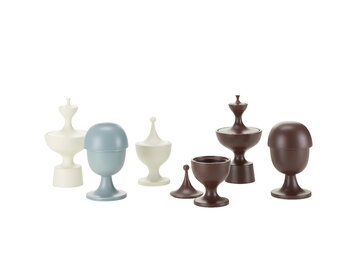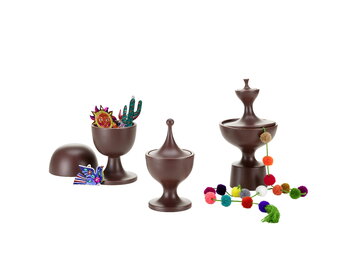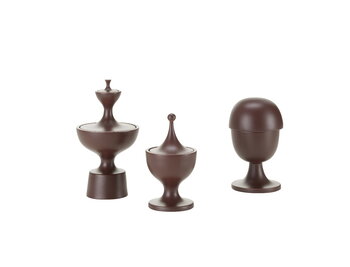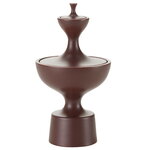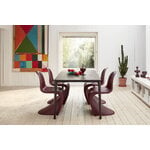Vitra’s Ceramic Containers represent the playful design language typical of American designer Alexander Girard, where functionality is combined with sculptural flair. The jar makes an eye-catching element in the decor whether used simply as a decorative accessory or as a distinctive storage space for keys and other bits and bobs.
The original jars, designed in 1952, were hand-turned from wood by Girard himself, and today they can be found in the archives of the Vitra Design Museum. To make the delightful works more widely available again, Vitra joined forces with the Girard family to develop ceramic versions of them, introducing Ceramic Containers in 2021. The hand-glazed boxes are available in various shapes in a range of shades inspired by Girard's colour palette.


